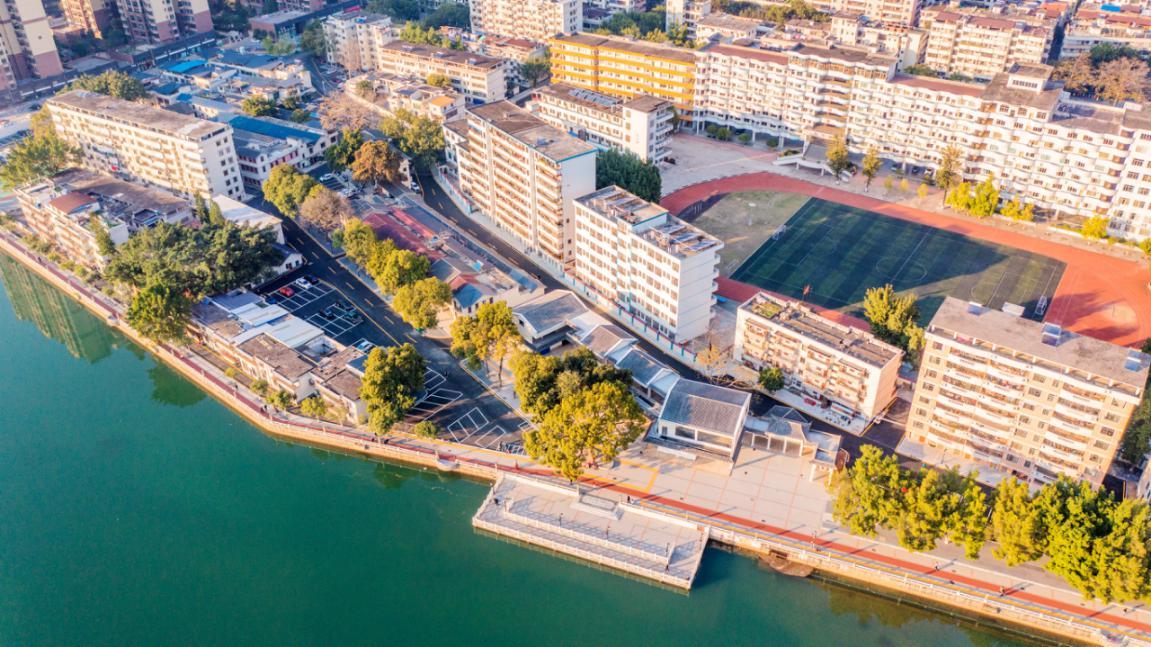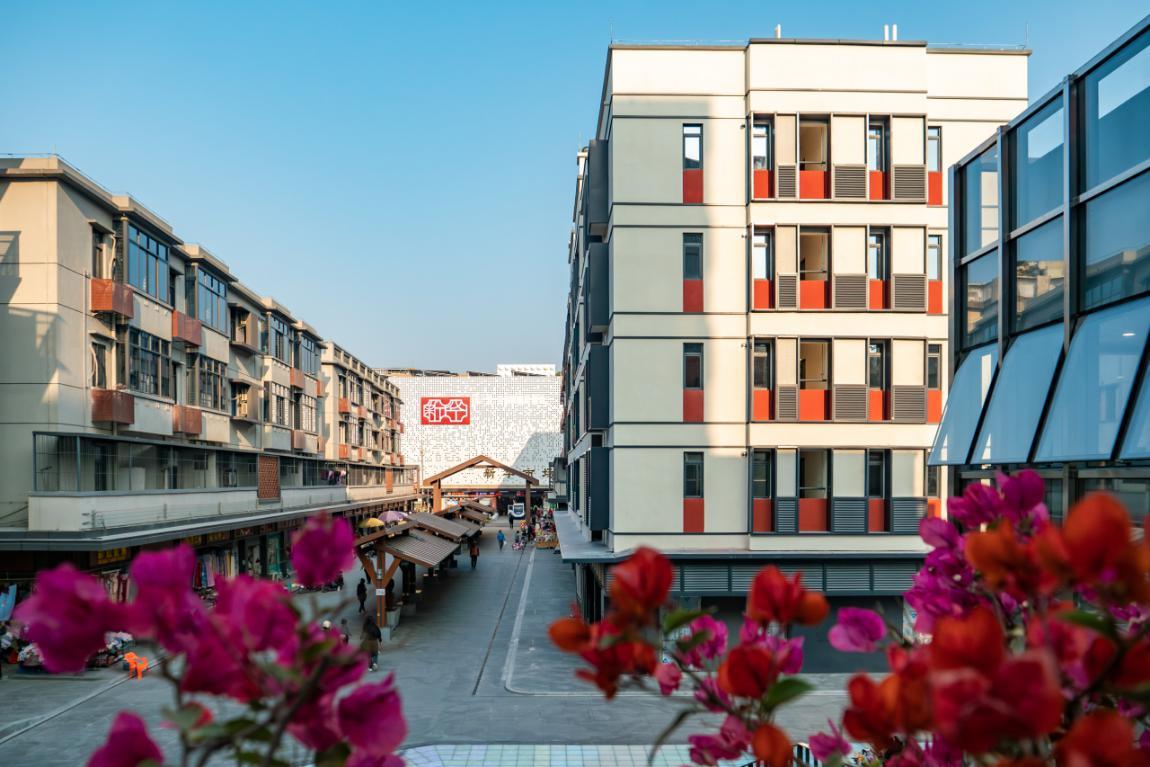
In 2024, Guangdong started the renovation of 2,500 old residential communities, benefiting 600,000 households, setting a new historical record. From 2021 to 2024, a total of 9,200 communities have been renovated across the province, improving the living conditions of 2.08 million households.

A total of 43 counties across the province have started the renovation of 588 old residential communities, significantly improving the quality of life for residents. The Department of Housing and Urban-Rural Development of Guangdong has organized on-site observation events in Shaoguan City's Shixing County and Meizhou City's Fengshun County to exchange experiences and practices related to the renovation. By the end of 2024, Shixing County had initiated the renovation of 36 communities, benefiting approximately 30,000 households.
Fengshun County has innovatively implemented the "old communities + district renovation" model. By the end of 2024, 52 old residential communities across the county had started renovation projects, adding 1,600 parking spaces and benefiting over 100,000 residents.
Across various regions, a funding model has been adopted where residents contribute a portion, the government provides additional subsidies, and social funds are raised, creating a multi-channel approach to finance the renovation. This model brings together efforts from all sectors, fostering an atmosphere of joint construction, shared governance, and mutual benefit.
The Jiqun Street No. 2 Building Demolition and Reconstruction Project in Huadu District, Guangzhou, follows the principle of " who benefit, who pay," holding property owners responsible for funding. The project explores a self-demolition and self-reconstruction model, with 25 property owners collectively shouldering the renovation costs at a rate of 4,600 yuan per square meter. In total, eight million yuan was raised, making it the first owner-funded self-demolition and self-reconstruction project in the province.

Meixian District in Meizhou City has selected the Fugui Garden area as a pilot project, introducing social capital to actively promote the application of "photovoltaic + architecture." Government funds are used to build supporting infrastructure around the community, such as new energy charging stations and electronic billboards. In addition, a social capital of 12 million yuan has been invested to construct a distributed rooftop photovoltaic power station for the community. The green electricity generated is transmitted through dedicated transformers to charging stations and other end-market facilities, generating revenue.
In various regions, while improving community environments and upgrading infrastructure, there is also a focus on revitalizing idle resources to stimulate the community's self-sustaining capacity.
In Huangshi Garden Community in Guangzhou, idle government-owned housing resources have been revitalized through the introduction of the China Visionary Group via the EPCO model. The government-owned properties are being renovated and transformed into a youth community and youth apartments. This initiative aims to develop and utilize idle resources, enable the socialized and sustainable operation of public housing, reduce government management costs, and increase rental income.
Wenchang Pavilion in Shixing County, Shaoguan City, was originally built in the Ming Dynasty and is constructed mainly with brick and wood. Following the principle of "repairing the old as the old," the pavilion has undergone renovation and preservation work. A new square and parking lot were constructed in front of the pavilion, and facilities such as barriers and lighting were installed. Shixing County has also utilized the pavilion to host various cultural and artistic activities, breathing new life into this historic structure and allowing it to shine once again.
Source: Lingnan on the Cloud
Vibrant Guangdong | 广东省全年新开工2500个城镇老旧小区
2024年,广东省新开工改造老旧小区2500个,惠及居民60万户,创历史新高。2021-2024年,全省已开工改造9200个小区,惠及居民208万户。
全省共有43个县开工老旧小区588个,居民生活品质得到有效提升。广东省住建厅分别在韶关市始兴县和梅州市丰顺县举办县城老旧小区改造现场观摩活动,交流经验做法。截至2024年底,始兴县已开工改造36个小区,惠及居民约3万户。
丰顺县创新实践“老旧小区+片区改造”模式,截至2024年底,全县已开工52个老旧小区,增设停车位1600个,惠及群众10万余人。
各地按照居民出一点、政府补一点、社会筹一点的模式,多渠道筹措改造资金,凝聚多方力量,营造共建共治共享氛围。
广州市花都区集群街2号拆建改造项目按照“谁受益、谁出资”的原则落实业主出资责任,探索自拆自建模式,由25户业主按照4600元/平方米的标准共同承担改造成本,共计筹集800万元,成为全省首例业主筹资自拆自建项目。
梅州市梅县区以富贵花园片区为试点,引入社会力量,积极推广“光伏+建筑”应用,政府资金用于小区周边配套建设新能源充电桩、电子广告屏等基础设施,引入社会资本1200万元建设小区分布式屋顶光伏电站,通过专用变压器将绿电送到充电桩等终端市场产生收益。
各地在改善小区环境、提升基础设施水平的同时,注重对闲置资源的盘活,激发小区自我造血能力。
广州市黄石花园小区盘活闲置政府公房资源,通过EPCO引入愿景集团,对直管公房进行重新装修改造,打造青年社区和青年公寓,实现闲置资源开发利用、公房社会化可持续运营,减少政府管理成本、提升租金收益。

韶关市始兴县文昌阁始建于明代,整体为砖木构筑,按照修旧如旧的原则对文昌阁开展修缮保护,在阁前新建了广场和停车场,安装了隔离护栏和灯光等设施。始兴县利用文昌阁举办各类文艺活动,让这座古建筑再次焕发新光彩。
文|记者 范晗越 通讯员 岳建轩
图|通讯员提供
翻译丨林佳岱
审校丨赵凡
-
Guangdong: in 2024, 4.23 million mu of forest are improved in quality
2025-01-08 23:44:45 -
From 'shutting down' to transformation: the heartwarming story of a small shop
2025-01-08 23:44:50 -
Vibrant Guangdong | Intelligent upgrade of Guangdong thermal power enterprises
2025-01-08 23:44:55 -
Poster | As the Spring Festival approaches, the festive atmosphere is in full swing! Foshan's Kuaizi Road is bustling with excitement
2025-01-08 21:46:17






